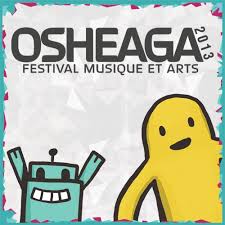 KAROLINA WISNIEWSKI
KAROLINA WISNIEWSKI
<Opinions Editor>
If you listened really carefully, you could probably hear the collective exasperated sigh let out by Canadian music enthusiasts at 8 pm on March 11th when the lineup for Osheaga 2013 was announced. It would be a stretch to call it a disappointment, but this year’s lineup (or what’s been announced of it so far) pales in comparison to last year’s stacked festival. The 2012 festival scheduled so many blockbuster artists that attendees were forced to decide between Sigur Ros and MGMT, or M83 and The Black Keys, or Santigold and Austra; there simply weren’t enough timeslots to go around. Last year’s edition masterfully blended established acts, indie niche bands and relatively unknown up-and-comers. The logic behind the scheduling was clear: include something to please the mainstreamers and the hipsters alike, plus offer burgeoning talent some much needed exposure. Sadly, the same can’t be said for this year.
Unlike the 2012 edition, there seems to have been little to no thought put into this year’s Osheaga lineup. This seems especially odd given that last year was the most successful installment of the festival yet; if event organizers are ever going have the means (financial or otherwise) to attract some knockout performers, you’d think now would be the time. Admittedly, it’s obvious that the festival is trying to reshape its image away from indie, emo, and obscure, and is instead stretching its reach into previously neglected musical genres. This might account for the awkwardly abrupt changes that seem to have taken place. The inclusion of The Cure (who are headlining) and New Order shows a keen interest to tap into a slightly more mature audience than the festival has previously hosted, which could be a welcome change. It also signals an urge to get us yuppie Generation Y-ers to listen to the grandfathers of the electronic, post-punk alternative music that is currently experiencing a renaissance. Another noticeable change is a more serious effort to engage with developments in the rap and hip-hop genre. Including Azealia Banks, Angel Haze, and Kendrick Lamar shows that event organizers have their finger on the pulse of what’s relevant in this field, if critical acclaim is any indication.
It’s interesting (though not exciting) to see The Cure heading the event. Their co-headliners, Mumford and Sons, are a much less inspired addition. Protesting the weakness of Osheaga’s headliners, though, is as unproductive as it is unoriginal – previous festivals boasted no stronger headers: The Black Keys, Eminem, Weezer, Coldplay, etc. So although this year’s leading bands are a disappointment, they have been for many years; the strength of Osheaga doesn’t stand or fall on this basis. Rather, it’s the rest of the bands that are a problem. While I take no issue with Tegan and Sara, Ellie Goulding, or Icona Pop, they seem like the most profoundly boring, vanilla bands organizers could have possibly dug up. Likewise for The Lumineers, Phoenix, and Imagine Dragons. Silversun Pickups are a nice surprise, and will offer a welcome throwback to the early 2000s. Vampire Weekend, though divisive, are known to put on great live shows. Despite their critics, they’ve managed to secure a strong following, so this inclusion will carry broad appeal. Beach House, the darlings of the dreamy lo-fi scene, are sure to be a highlight, though their style of music seems antithetical to the spirit of a live festival; ditto for Wild Nothing. Frightened Rabbit are another highlight, but this element of optimism is counterbalanced by Jimmy Eat World and Hollerado also appearing on the lineup. What’s next, Simple Plan? Jessie Ware, DIIV and The Knocks are all lesser known artists doing great work in their respective genres. But the worst, most disappointing addition of them all, the one that might lead to the downfall of Osheaga itself – Macklemore and Ryan Lewis. Unforgivable.
